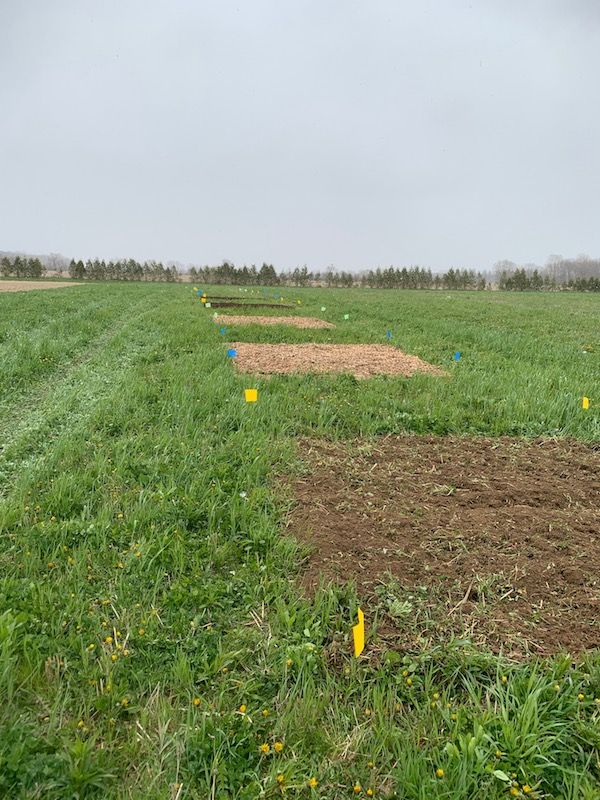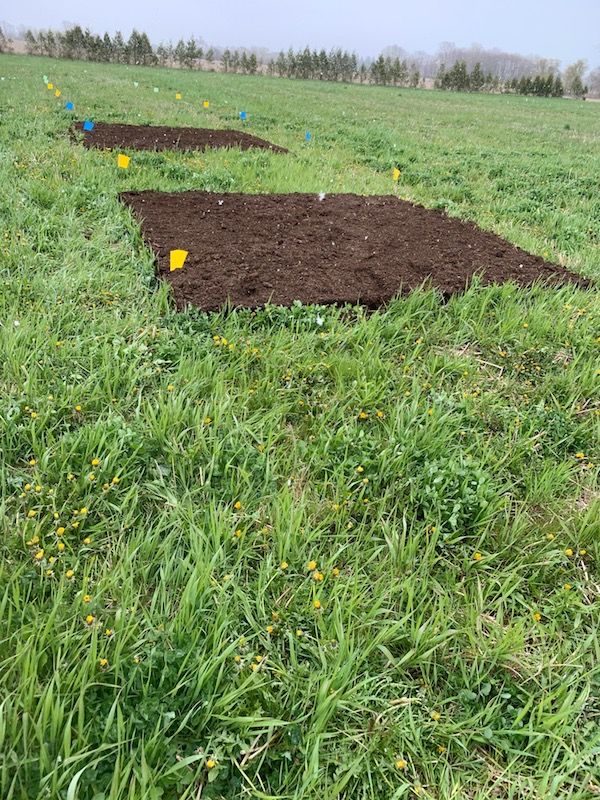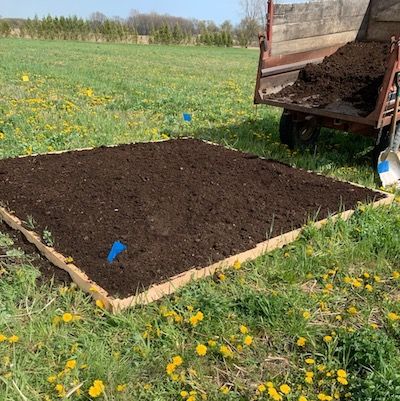Many farmers have the challenge of preparing a field to grow vegetables that has been neglected or poorly managed and is in a poor state of fertility and/or soil health. When horticultural crops – which net considerable value/acre – will be produced on this land, we are less concerned about the cost to regenerate the soil and more concerned about the timeline for regeneration.
As part of EFAO’s No-Till Vegetable Trials, Ken is looking at four treatments to compare different methods for rapid regeneration of soil health for vegetable production, including:
- Cut and Come Again (C&CA) utilizing the red clover, grasses and weeds remaining after a crop of rye;
- Deep Compost Mulch (DCM) using spent mushroom compost;
- Wood Chip Mulch (WCM) coarse wood chips from poplar trees
- Cover Crops (CC) a series of cover crops – note this is the only treatment that was tilled with a rototiller first.
The field that was selected has had very little compost or other fertility over the years and is in a low state of fertility. The plots were paired so that the effect of correcting low nutrient levels right at the beginning could be evaluated for each treatment.
The following was the amendment mix used: compost 10 tons/ac (not used on the alternate DCM since 3.5” compost = 175 tons/ac), 50 lb/ac 90% sulphur, 200lb/ac potassium chloride, 30 lb/ac 10% boron and 500 lb/ac Calphos. The plots will all be monitored over the next 3 years.
Author: Ken Laing is an EFAO member-farmer and farmer-researcher leading EFAO’s No-Till Vegetable Trials on is farm, Orchard Hill Farm, near St Thomas, Ontario.

Looking down the row of plots for the Rapid Regeneration Trial.

The 2 tilled plots prior to planting cover crops (foreground); and the Farmall 75A and rototiller.

Setting up a Wood Chip Mulch (WCM) plot using a 2×4 form to apply 3.5″ deep.

Peas, planted April 22, emerging in the daikon plus DCM plot.

Using a 2×4 form to apply the Deep Compost Mulch 3.5″ deep.

Looking down the row of plots with the Wood Chip Mulch (WCM) plots in the foreground.

DCM plots in foreground.

